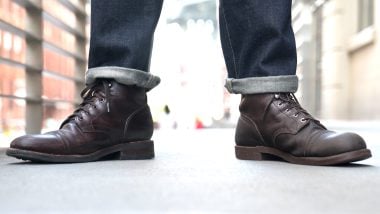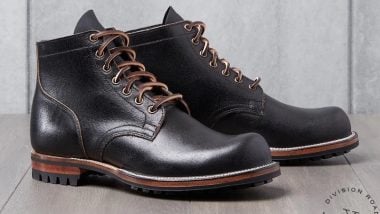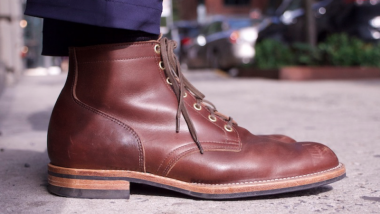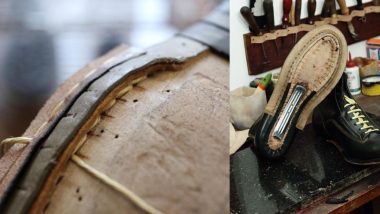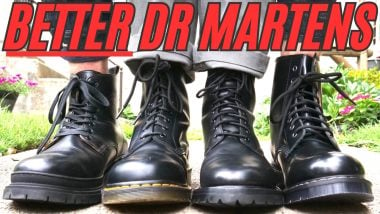The Pros and Cons of Kangaroo Leather
Kangaroo leather, sometimes called K-leather, is what most people would call exotic leather, though that term typically brings endangered and exalted animals to mind. In truth, kangaroos are to Australia like deer are in North America — many consider them pests, and they’re far from rare. They’re basically Australian deer.
OK, roo BOUNCE, but much like deer, they live naturally in the wild before becoming leather. They’re not farmed, and most importantly, they are not endangered, vulnerable, or near threatened. There are more kangaroos than people in Australia, and they are prone to overpopulation and mass die-offs during summer droughts and fires.
So, between the lack of predators, getting shot as pests, and mass die-offs, it’s good to use their incredibly low-fat red meat — and leather.
And as it happens, kangaroo leather is the best boot leather. We’re starting with the pros and cons and exploring why it’s illegal in some places.
It Ages Beautifully
And the first reason why kangaroo leather is the best? It ages beautifully. How it ages depends on the tannage. Vegetable-tanned leathers age differently than chrome-tanned leathers, but compared to cow leather, the tight grain structure in kangaroo leather. It comes in both chrome-tanned and veg-tanned varieties, so you’ll want to check out the difference between the two before buying.
It develops a rich patina that only improves over time — it’s a rewarding leather to wear that reflects the journeys you take it on.
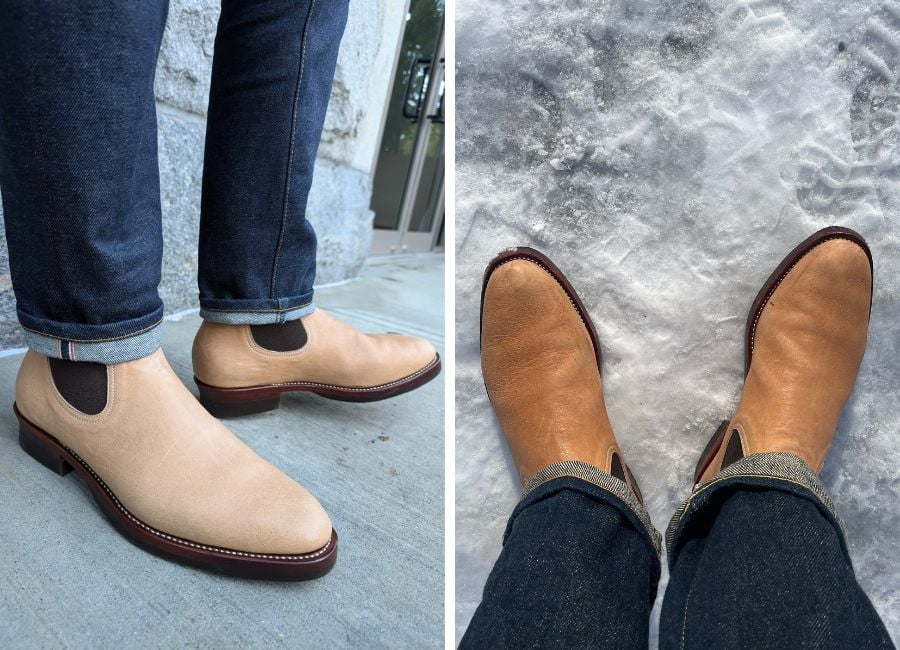
Kangaroo Leather Is Incredibly Strong for Its Thickness
Kangaroo leather is lighter, stronger, and more flexible than goat or cowhide
One of the most common uses of kangaroo leather is making whips because it is a super supple leather. It’s flexible enough to be easily braided and whipped through the air.
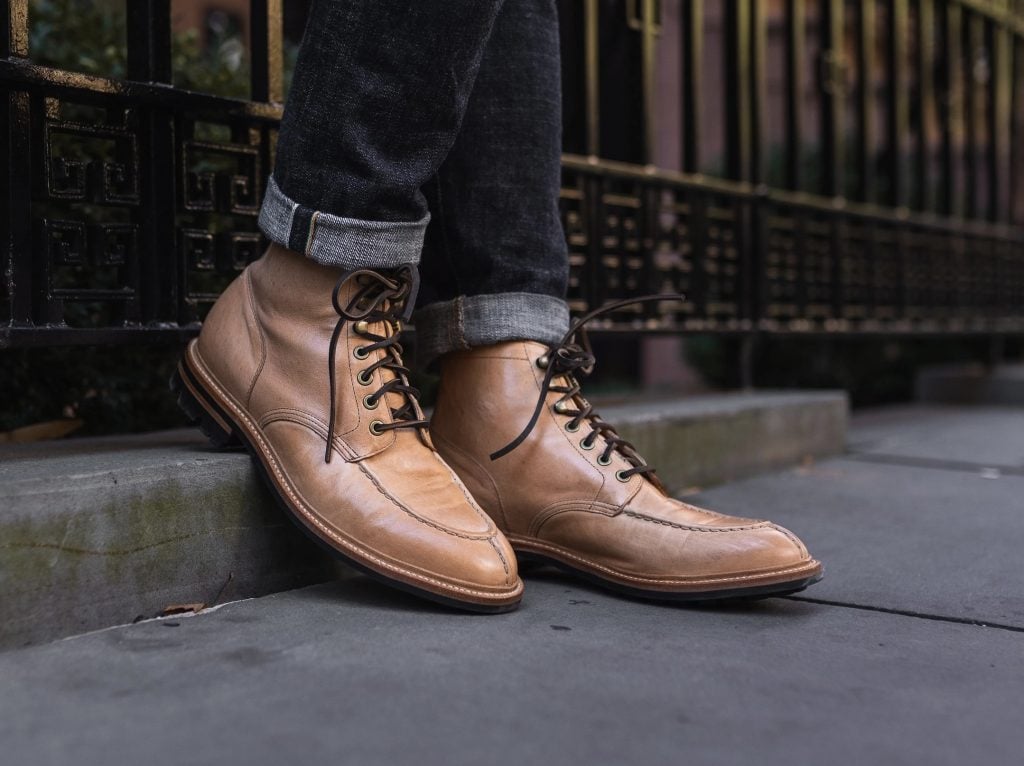
Another popular use? Motorcycle suits are highly valued for their resistance to tearing and abrasion. And that’s a serious testimonial to its toughness. Think about it: in the kind of sport where a mistake leaves you smeared across the asphalt, you want the only thing between your skin and a bloody, bloody disaster to be as tough as possible. Kangaroo leather is that thing.
Why Are Kangaroo Leather Soccer Cleats So Popular
It is the most common type of leather used in manufacturing soccer cleats. Its uniform fiber makeup is key to its popularity in the soccer world. The microscopic makeup of the leather gives it excellent properties that are practical for playing on the field and striking the ball.
- Resistance: Due to its uniform fibers, footwear crafted out of kangaroo leather distributes energy evenly around the area of impact. This avoids microfractures in the leather that would eventually lead to it cracking.
- Durability: Due to the fiber’s shield-like properties, kangaroo leather cleats will outlast affordable ones made from synthetic materials.
- Strength To Weight Ratio: Kangaroo leather is naturally lighter in weight per meter. It does not need to be skived down to the appropriate thickness for manufacturing. Cowhide of the same thickness is roughly 3x weaker than kangaroo leather.
- Tailor-Made Feel: Due to the fiber’s interweaving, rope-like structure, kangaroo leather cleats experience subtle expansion around the contours of the foot, causing the upper shape to the wearer much faster.
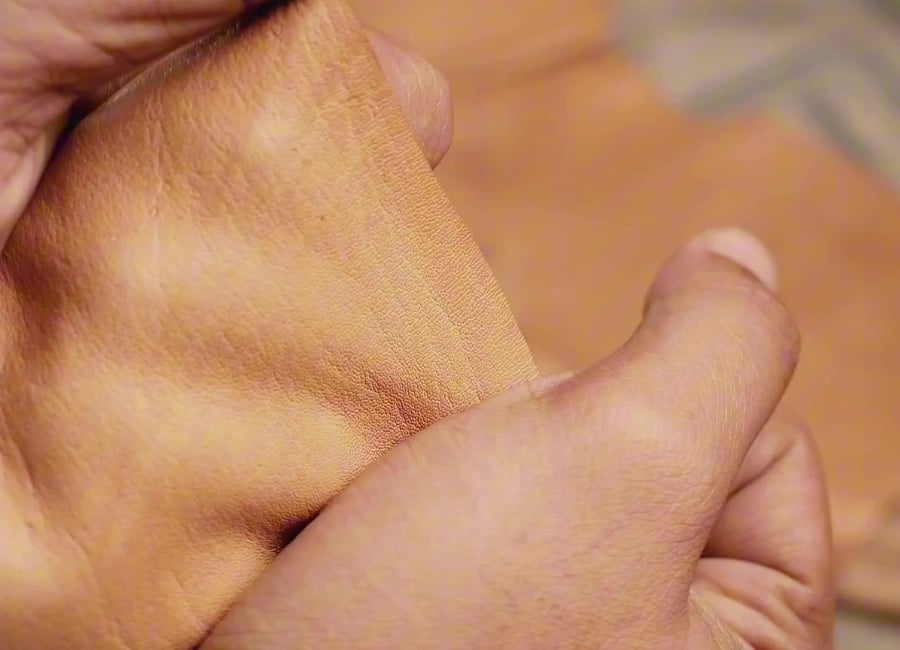
Kangaroo Leather Retains More Strength When Split
It also retains a lot more of its strength when it’s split than cowhide. Tanneries often reduce the thickness of leather to make a boot more comfortable or improve the lasting; this means you can make a more comfortable boot without sacrificing as much of its durability.
You can make tough-as-nails kangaroo boots with skin that’s barely a millimeter thick. (Cowhide boots are usually 1.4 to 2 millimeters.) Unsurprisingly, this means that they make a much lighter final product: kangaroo leather boots usually weigh half as much as comparable cow-leather ones.
All that’s because the skin of the animals themselves is very different. The collagen fibers that makeup the hide are fine, concentrated, highly uniform, and parallel to the skin’s surface, unlike cow skin’s irregular, bundled structure.
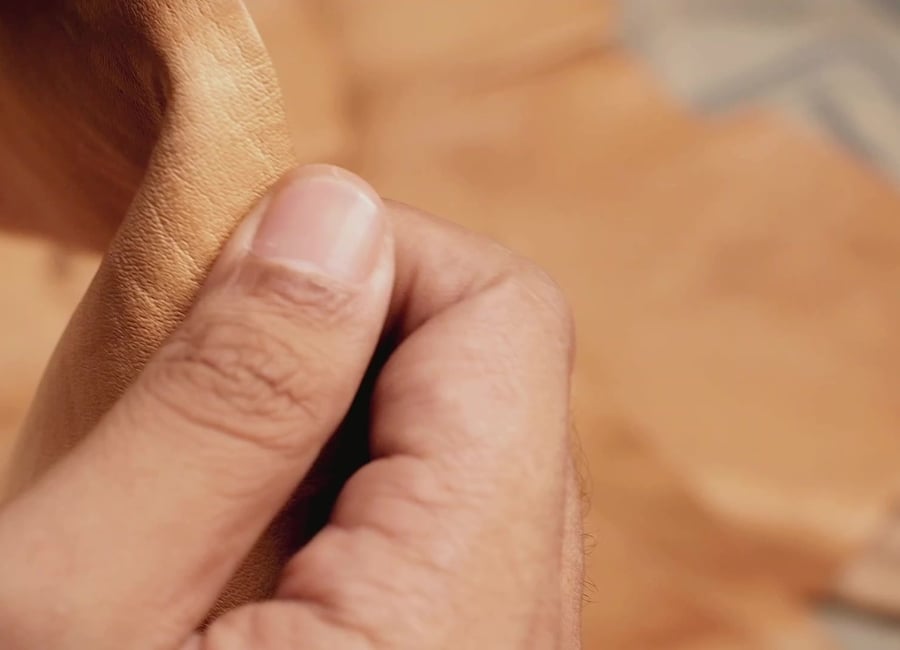
Roo hides also have very low fat content and a thin grain layer, without sweat glands and erector pili muscles, which means it doesn’t require the splitting and shaving that some other leathers require (hence the resulting thin, supple, strong leather).
Plus, elastin is evenly distributed throughout the skin, which means it’s uniformly stretchy. All of these factors give it a ton of tensile strength: it can stand being pulled apart.
Now, comfort means different things to different people, and how leather is tanned affects that too so these terms are actually pretty hard to be objective about, but what is objective is that once you start splitting leather, one source found that cowhide with just 20% of its thickness cut off loses over 95% of its strength, do the same thing to kangaroo it just loses 50% of its strength.
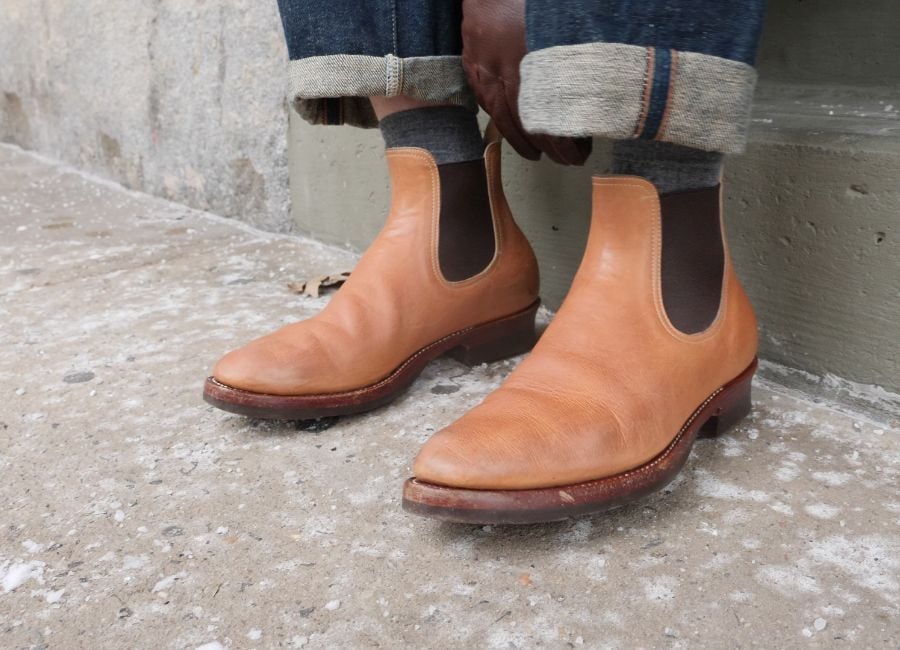
Kangaroo Leather Is More Affordable Than Other Premium Leathers
For all those advantages over cowhide, it’s not really expensive.
Many boots made from kangaroo leather aren’t cheap because they’re very special, but if you look at a brand selling both kangaroo and cow leather boots, they’re typically the same price.
It’s probably not expensive because the hides are from culled animals that no one has to pay to raise.
The Downsides of Kangaroo Leather
K-leather has a noticeable grain and does crease easily; now, you might see that as a pro, and that creasing doesn’t usually lead to cracking because of the strength of the collagen fibers.
Unless it’s corrected, it’s usually not the smoothest leather — almost all kangaroo leather has scars. It’s not the shiniest either; it has a matte texture that develops a patina quickly, and it darkens faster than other leathers as well.
This is, of course, all a matter of preference, and there are plenty of folks who happily trade off a shiner, more perfect-looking leather for a lighter, stronger, more flexible one that will develop character quickly. We can’t make that call for you. It just depends on what you’re looking for and what’s already in your wardrobe.
The Big Con
The real con is that it comes from kangaroos, and people have a lot of feelings about animal welfare, and that’s a good thing. Adidas’ most popular soccer shoe of all time, the Copa, is made from kangaroo leather — but their marketing typically calls them “k-leather” to avoid putting anybody off.
That said, there are a lot of people who argue kangaroos are pest animals whose numbers are reasonably kept down with annual culling. This means eating the meat and turning the hides into leather for, say, your new boots, is the responsible thing to do. Commercial hunters are heavily regulated in Australia, and there are strict quotas for hunters.
On the other hand, lots of environmental activists strongly disagree. A quick google and you’ll find lots of phrases like “the Australian killing industry,” concerns about how humane the culling process really is, and lots and lots of photos of kangaroos looking plaintively cute.
We can’t really make this call for you except to say that kangaroos are not an endangered species, and leather is always made from dead animals. If you’re okay wearing leather, you’re likely to be fine wearing kangaroo leather.
[Related: My list of The Best Boots for Men]
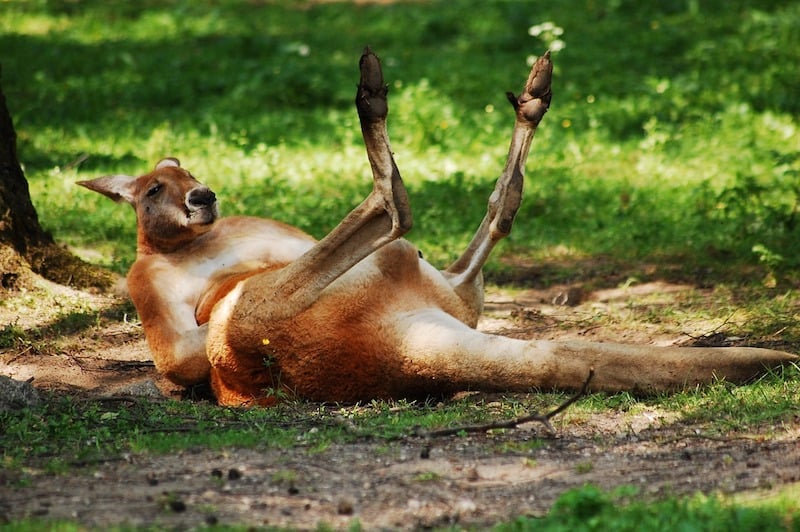
Why Is Kangaroo Leather Banned In California
California is notorious for quickly regulating goods and services that can potentially harm people or the environment. One such regulated good is kangaroo-based products. California’s ban on imported kangaroo leather and meat started in 1971 when American conservationists saw a huge decline in Australia’s kangaroo population.
Following their expert assessment, kangaroos were put on the US endangered species list, and soon after, even Australia banned the exportation of kangaroo products. The bans were not heavily enforced on the Australian side. For three decades, Australian politicians and ‘roo export giants lobbied American lawmakers to remove the animal from the American endangered species list. The American banned was lifted in 1995 but it still exists in California today.
A Brief Timeline On California’s Kangaroo Ban
The issue is way more complex and political, and it may be a tad bit too much for this outlet. In short, California’s ban was not unanimously agreed upon, and for decades now, legislators have gone back and forth to the voting floor to discern the right approach. In recent times, California’s ban has been cited as a precedent for Oregon legislators totally their own state ban.
- 1971: American experts deemed kangaroo populations were declining rapidly
- 1973: Australia banned the exports of kangaroo products
- 1974: Three commercially hunted kangaroo species were classified as endangered, and the US banned ‘roo imports
- 1995: The US lifted the ban, but California’s ban remained in place
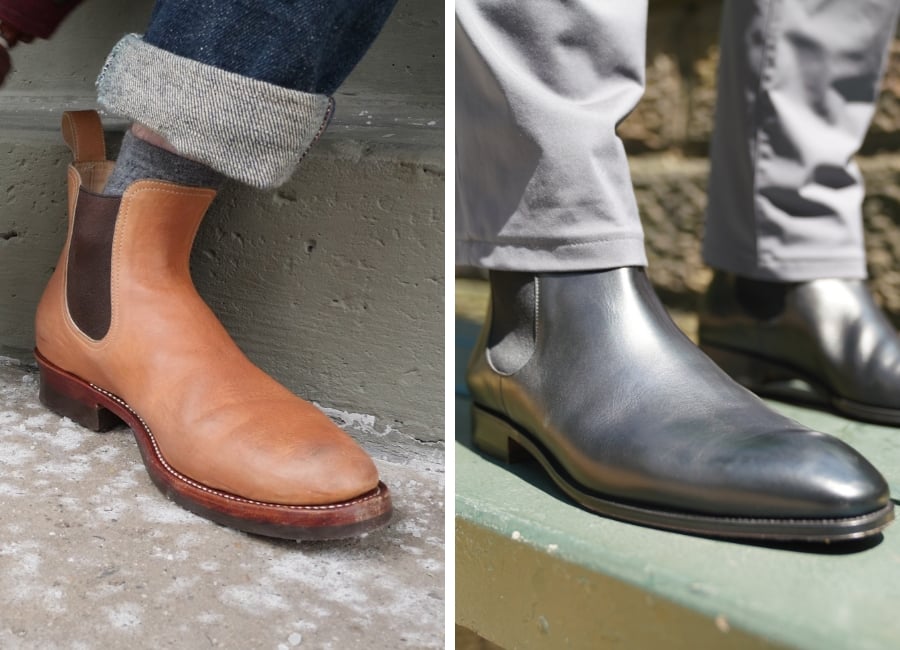
Kangaroo Leather vs Cow Leather
Even at a glance, cowhide and kangaroo leather have some stark differences. Going back to what was said before, kangaroo skin lacks sweat pores. The absence of these pores gives the hide more surface area filled with skin fibers.
The densely packed fibers provide kangaroo leather with a superior structural makeup compared to cowhide. To the untrained eye, the kangaroo will resemble shell cordovan leather, another tough leather considered one of the industry’s best.
How Kangaroo Leather Is Better Than Cow Leather
Kangaroo leather can be skived down and still retain much of its strength. For example,
- Cow leather when skived down to 20% of its original thickness only retains about 2% of its original strength.
- Kangaroo leather when skived down to 50% of its original thickness only retains about 50% of its original strength.
Rose Anvil demonstrated this in his video titled, Is kangaroo the world’s strongest leather? by stretching out pieces of kangaroo and cow leather of the same thickness on an engine press. In his experiment, the cow leather tore at 15 and 17 pounds of pressure respectively while the kangaroo leather was abe to withstand up to 37 pounds of pressure.
Rose Anvil placed the two types of leather in a ring-crafting mold and applied force on a nail to puncture the leather pieces to test each leather’s resistance to sharp objects. The nail tore through the cow leather with only 16.5 lbs of pressure. It took nearly twice as much force to pierce the kangaroo leather, which had been pierced at 38 lbs of pressure.
How Cow Leather is Better than Kangaroo Leather
Cow leather only trumps kangaroo leather in abrasion resistance. In Rose Anvil’s experiment, they placed the two types of leather on a belt sander and timed how long it took before the leather fibers disintegrated. For cowhide, the belt tore through the leather in 1 minute and 38 seconds, and kangaroo leather only lasted 1 minute and 17 seconds.
Despite this, though, kangaroo still has double the tear and puncture resistance as cowhide, so it’s safe to say that kangaroo leather products will fare much better for most people.
The Verdict
Kangaroo is a strong, supple, durable, light, and long-wearing leather that makes boots that will last you for years. If you’re the kind of person who’s looking for the character of an easy patina and doesn’t mind explaining the fact that kangaroos are certainly pest animals, then it’s definitely worth investing in a pair.
[Related: My List of The Best Boots]
Featured image via Viberg.
Yes, Adidas has used kangaroo leather, particularly in their soccer cleats. Their most popular soccer shoe, the Copa, has been made with kangaroo leather, though they often refer to it as “K-leather” to avoid potential controversy.
Yes, kangaroo leather is considered one of the best leathers for boots and shoes. It is incredibly strong for its thickness, lightweight, flexible, and durable, making it a favorite for high-performance footwear like soccer cleats and motorcycle suits. It also develops a beautiful patina over time, making it an excellent choice for high-end boots.
Kangaroo leather, also known as K-leather, is a strong, lightweight, and flexible leather made from kangaroo hides. Unlike farmed leather, it comes from wild kangaroos that are culled due to overpopulation. It has a dense, uniform fiber structure, making it more durable than cowhide at similar thicknesses.
Yes, kangaroo leather is legal in most places, but it is banned in California due to a longstanding law from the 1970s, which originated from concerns about kangaroo population declines at the time. However, Australia regulates kangaroo harvesting strictly, ensuring it remains sustainable.
Kangaroo leather is produced from wild kangaroos that are legally culled under strict government regulations. The hides are tanned using either vegetable or chrome tanning methods. Due to their unique fiber structure, kangaroo hides require less splitting and shaving compared to cowhide, resulting in a lightweight yet strong leather.

